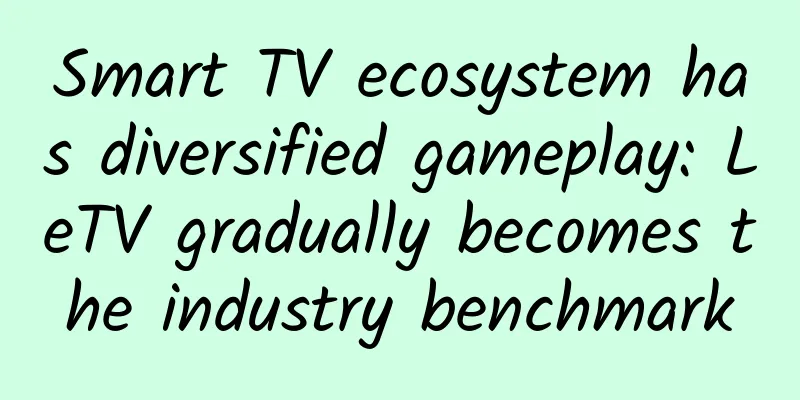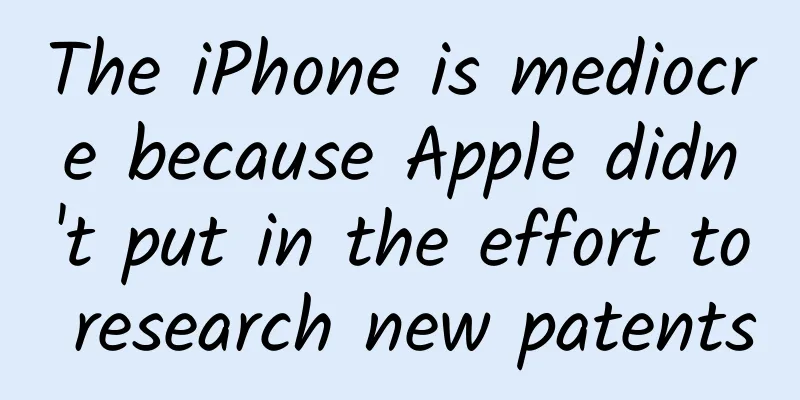Smart TV ecosystem has diversified gameplay: LeTV gradually becomes the industry benchmark

|
The battle for the "smart TV ecosystem" has become a popular topic in the industry. Although traditional TVs are already at the forefront of being disrupted by the Internet, their positive transformation attitude is worthy of recognition. Different manufacturers' different development models and situations also determine that their smart TV ecosystem construction cannot be completely consistent, and diversified development is inevitable. Jia Yueting, CEO of LeEco, once pointed out that LeEco, as a pioneer of Internet companies entering the TV field, had gone from being questioned, ridiculed and watched by the industry to now being followed by other Internet companies. LeEco's TV model is different from that of existing traditional TV manufacturers, Internet companies and IT manufacturers, and LeEco's ecological advantages cannot be replicated in a short period of time.It was found that major TV manufacturers are actively seeking to transform into smart TVs and build a smart TV circle. They all hope to use "intelligent" artifacts to explore blue ocean markets beyond hardware terminals, such as platforms, content, applications and other areas of revenue. At the same time, they provide more technical barriers and customer stickiness, making them more advantageous in the terminal market than traditional color TVs and providing support for more terminals in the future. Emulating LeEco’s Ecosystem Since LeEco launched its first super TV last year, the "smart TV ecosystem" has become the object of competition in the industry. Although there is no unified understanding of the concept and standard of the ecosystem in the smart TV industry, and the applications that smart TVs can provide are still of varying quality, the overall market trend has become increasingly clear. As more and more traditional TV companies cross over to embrace smart TVs, most of them combine their own product advantages and try to connect home appliances such as TVs, refrigerators, washing machines, air conditioners and even small kitchen and bathroom appliances in the living room. The ecosystem has become a top priority, and TV has become the "smartest" member of these home appliances. Its strategic position is crucial, and it has further laid out the concept of home Internet on a larger scale. Some TV companies that follow LeTV's example want to unite content and application companies to achieve a "vertical industrial chain model" through the integration of multiple resources. By stacking content and combining upstream and downstream, they want to give play to the synergy of each link in the industrial chain, and intend to make a difference in the smart TV ecosystem such as content, advertising and applications. The "LeEco ecosystem" that is hotly discussed in the industry is actually LeEco's integration of platforms, content, terminals, applications, etc. into a complete ecosystem with "LeEco characteristics". For example, the vertically integrated 4K ecosystem - Le4K, provides users with multiple user experiences through a "4X4" complete 4K system consisting of 4K content and applications, 4K cloud platform, 4K screen, and quad-core processor. It is found that some TV companies are trying to interconnect different terminal devices to realize the integration of mobile phone screen, PC screen and TV screen, and directly transmit the video, audio and pictures of the three to the TV. In addition, mobile phones and tablets can also be used as TV remote controls to realize the multi-screen integration strategy . At present, the vast majority of traditional TV manufacturers have already sought to transform into the smart TV market. The construction of a smart ecosystem has become the agenda of various TV manufacturers, and the future market prospects are booming. It is an indisputable fact. LeTV has a relatively complete industry chain in the smart TV ecosystem, with integrated production and sales channels, and its software and hardware construction are highly autonomous and innovative, with a high barrier to replication. TV companies should not blindly follow suit, but should focus on their own situations and make targeted efforts. During the visit, we found that the current ecosystem models are very diverse, with different ways of playing. Each "smart TV ecosystem" with its own innovative characteristics has promoted the great prosperity of the smart TV industry chain. Hisense, a giant in the TV industry, is playing its cards well and has joined forces with 11 video websites including Future TV and iQiyi to build a "1+11" strategy to achieve content sharing among 11 Internet video websites. Hisense does not produce content, but only serves as a video portal. The Ali TV ecosystem created by e-commerce giant Alibaba has the biggest feature of integrating online shopping, life assistant and other functions with video, audio and other life and entertainment applications. It attempts to solve the payment problem on the TV platform, and also connects TV and mobile phones to achieve a multi-screen interactive experience. Qihoo 360 has also recently entered the smart TV ecosystem and launched 360 TV Assistant, which has built-in 360 search resources, as well as software installation package cleaning, updating, uninstalling, etc. It also optimizes page loading and shortens user waiting time. It has three entrances: installation essentials, new listings, and search to meet the needs of different types of users. In addition, some even introduced the concept of "dual system", one is to build a smart TV operating system independently, and the other is the Android operating system with more open resources. The dual system reduces the operational risk of its own products to a certain extent, but this model is only a stopgap measure. It has not achieved the construction of a thorough intelligent ecosystem and it is difficult to form an effective ecosystem system. It is believed that the prospects of the smart TV ecosystem concept are self-evident. Traditional manufacturers should do more homework and understand and learn the various ways of playing in the smart TV ecosystem as soon as possible. They should be more refined in areas such as platforms, content, and applications beyond hardware, and refer to the various successful experiences of the LeTV ecosystem, so that the spirit of the smart TV ecosystem can be truly implemented. This is also the decisive battle position for smart TV companies in the future. As a winner of Toutiao's Qingyun Plan and Baijiahao's Bai+ Plan, the 2019 Baidu Digital Author of the Year, the Baijiahao's Most Popular Author in the Technology Field, the 2019 Sogou Technology and Culture Author, and the 2021 Baijiahao Quarterly Influential Creator, he has won many awards, including the 2013 Sohu Best Industry Media Person, the 2015 China New Media Entrepreneurship Competition Beijing Third Place, the 2015 Guangmang Experience Award, the 2015 China New Media Entrepreneurship Competition Finals Third Place, and the 2018 Baidu Dynamic Annual Powerful Celebrity. |
<<: Video websites betting on American dramas to revive may fail
>>: It’s time for wearable computing to “return to algorithms”
Recommend
What is the process for opening a Toutiao advertising account? What do you need to provide?
I plan to place an ad on Toutiao, but I don’t kno...
How will the medical bidding situation change after 360 returns to the medical field?
Starting from June 17, 2017, Baidu Fengchao promo...
Will 5G phones turn back to 4G? Possibly
At the press conference of the State Council Info...
1080P is eliminated: How long will it take for 4K to become fully popular?
In recent years, the electronic display market is...
Hot courses on Weibo and Baidu, optimization suggestions on Weibo and Baidu (updated)
Hot courses on Weibo and Baidu, optimization sugg...
WeChat macOS version 3.11 officially released: supports posting to Moments and browsing Moments albums
IT Home reported on June 23 that the official ver...
The first dog to go into space died peacefully after seven days of orbiting the Earth?
The first life on Earth to enter space was not a ...
Nine tips for early stage app brand building
Although the author is not an expert, he comes fr...
How to write a copy that takes advantage of New Year’s Day?
How to write a copy that leverages the situation?...
Understand the collection, analysis and application of "user behavior data" in one article
More and more companies have begun to explore the...
Analysis and trends of short video industry marketing strategies!
This article mainly focuses on the marketing rese...
【ASO Optimization】Three tips to help you get into the App Store’s recommended catalog!
Before reading this article, you need to make sur...
In addition to natural language processing, you can also use word embedding (Word2Vec) to do this
When using machine learning methods to solve prob...
Consumer Reports: Japanese brands take the top five spots in the US used car brand reliability ranking, while American brands rank last
The famous American magazine Consumer Reports rec...
Can the 360 version of bidding software only obtain rankings from actual promotions?
(1). The mobile version of 360 is basically 0. Cu...


![Krenz composition 6th term ends in June 2021 [HD image quality with courseware brushes]](/upload/images/67cc2c0b79978.webp)






